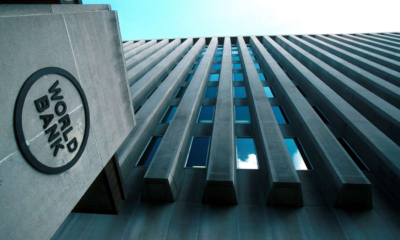Key points:
- China is all set to become the world’s only major economy to grow in 2020.
- China’s V-shaped recovery, given its place as the second-largest economy of the world.
- China is all set by being the only major country this year to avoid a GDP contraction.
- The International Monetary Fund (IMF) forecast that China’s GDP will rise by 1.9 per cent this year.
- The US, which is the largest market in the world, is starting to see the third wave.
- During the last few years, the world’s two biggest economies have been engaged in a trade war.
Since becoming the first country to identify the Covid-19 virus, China is all set to become the world’s only major economy to grow in 2020.
In the July-September quarter, China’s gross domestic product ( GDP) expanded by 4.9 per cent, according to statistics released by the National Statistics Bureau of the country.
China’s V-shaped recovery, given its place as the second-largest economy of the world, has created hopes of a rare growth cushion from across the globe.
The V-shaped Recovery of China:
After the pandemic’s effect, China’s economic rebound has followed a V-shaped recovery template.
In the January-March quarter, its GDP expanded by 5.3 per cent, increased 3.2 per cent in April-June and strengthened further in July-September.
Although the figure for the September quarter is lower than the 5.2 per cent forecast by a Reuters analyst survey, China is all set by being the only major country this year to avoid a GDP contraction, Eswar Prasad, a Cornell University economist, told the Financial Times.
In its World Economic Outlook published earlier this month, the International Monetary Fund (IMF) forecast that China’s GDP will rise 1.9 per cent this year.
The pandemic revived development in China:
The Financial Times said China’s GDP turnaround has been “stocked by a state-backed manufacturing boom.”
In the September quarter, industrial production grew 6.9 per cent, it said. A look at the number of the Purchasing Managers’ Index (PMI) for China reveals that the pandemic of Covid-19 may have potentially given the industry a boost.
From May 2019 to October 2019, PMI production was less than 50; 50.2 in 2019 November and December and 50 in January 2020, until it plummeted to 35.7 in February.
A PMI value above 50 means that economic activity is expanding. Currently, the post-February figures are higher than they were last year.
Containing infections that are important for economic recovery:
The growth figures for China also illustrate the importance of controlling the spread of the Covid-19 pandemic for economic growth.
China has not only been able to control the spread of the virus rapidly; it has so far been able to discourage the second wave of infections, unlike many other major nations.
The US, which is the largest economy in the world, is starting to see the third wave, although countries such as India continue to see a very high number of infections, even though the first wave has fallen.
Can the resilience of China stoke protectionist policies?
The rise of China as an economic powerhouse was powered by an export boom. This mercantilist trajectory, particularly after the financial crisis of 2008, fuelled the world’s protectionist backlash, particularly in advanced countries such as the US.
During the last few years, the world’s two biggest economies have been engaged in a trade war.
China’s economic and trade success, with Chinese exports increasing by 10.2 per cent in the July-September quarter, might create strong opportunities for world leaders to resort to protectionist measures at a time when the rest of the world is beginning an economic contraction.
This possibility may be increased by the increasing geopolitical rivalry between countries such as Japan and India with China and the efforts of President Donald Trump to use anti-China propaganda in the forthcoming US election. The tailwinds that China’s economic recovery could create for the global economy could be mitigated by any such growth.






































